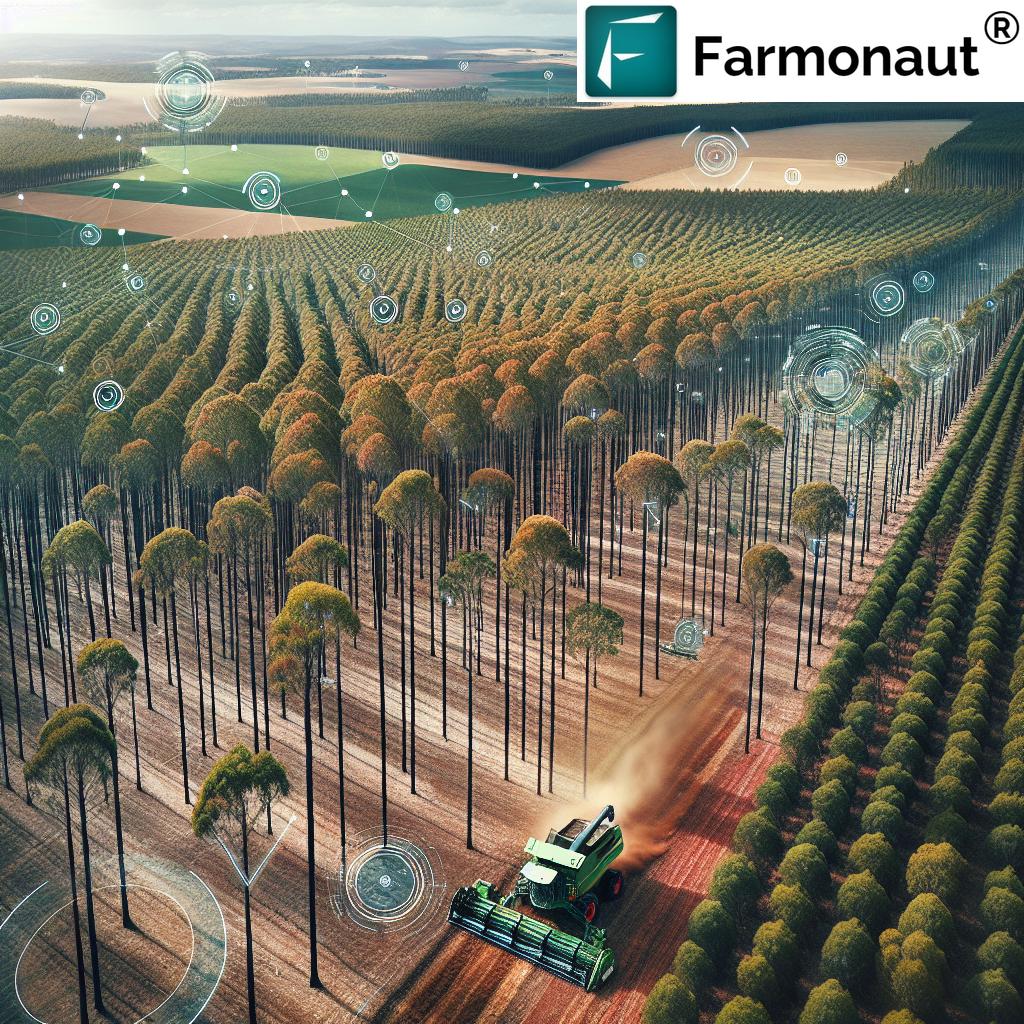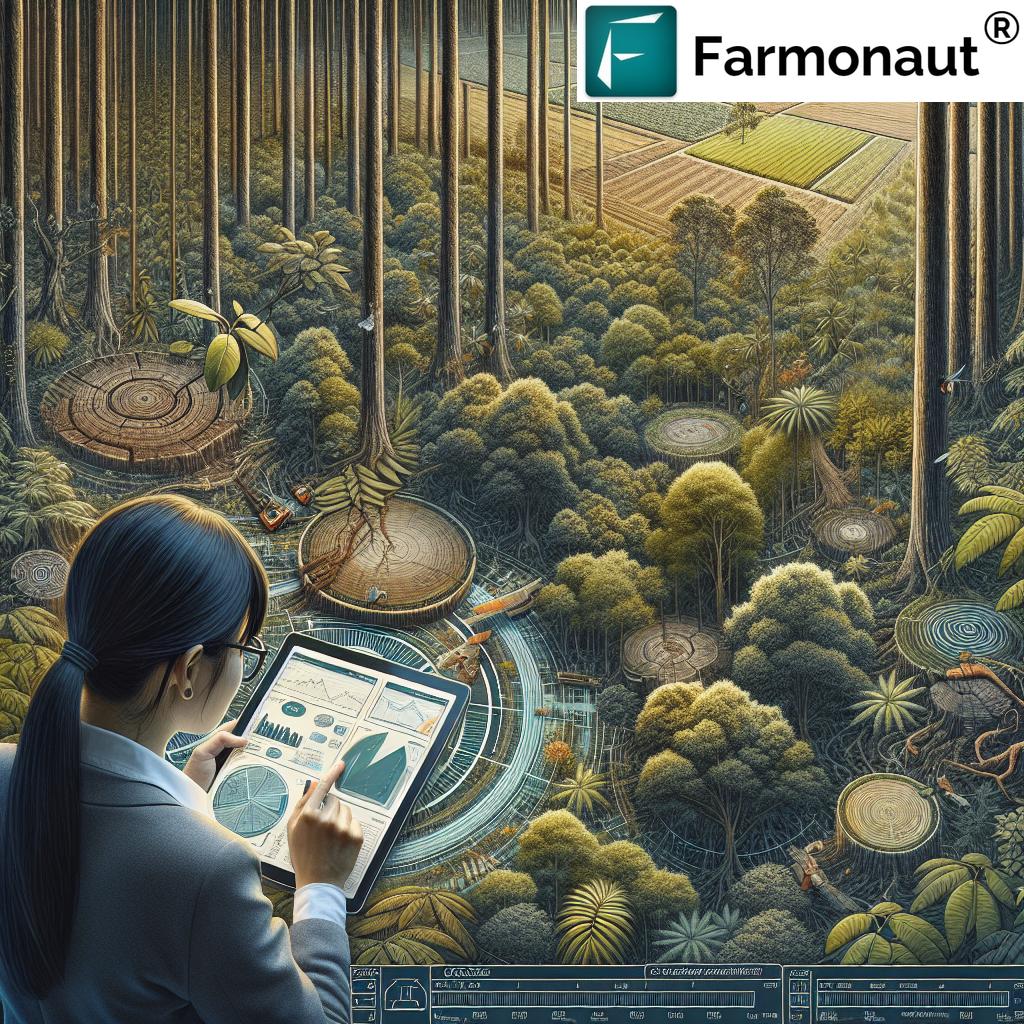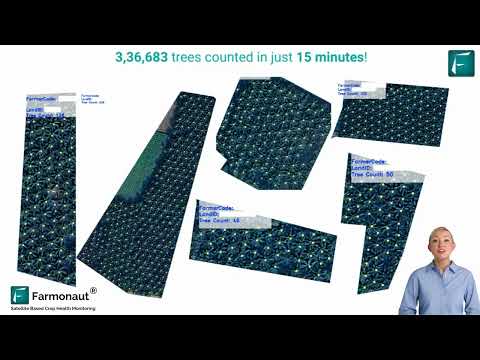Sustainable Forestry in South Australia: Innovative Agritech Solutions for Timber Industry Growth and Environmental Conservation
“South Australia’s plantation forests cover 168,000 hectares, generating $1.46 billion in revenue for the timber industry.”
Welcome to our comprehensive exploration of sustainable forestry management and agritech innovation in South Australia’s thriving timber industry. In this blog post, we’ll delve into the exciting initiatives and cutting-edge technologies that are reshaping the sector, promoting environmental stewardship, and driving economic growth. From precision forestry techniques to innovative pest control strategies, we’ll uncover how South Australia is leading the way in sustainable timber production.
The Timber Industry’s Economic Impact in South Australia
Before we dive into the innovative solutions transforming the forestry sector, let’s take a moment to appreciate the significant economic contribution of the timber industry in South Australia. With plantation forests spanning an impressive 168,000 hectares, the industry generates a substantial $1.46 billion in revenue. This economic impact underscores the importance of sustainable practices to ensure the long-term viability of this crucial sector.

Key Initiatives Driving Sustainable Forestry in South Australia
South Australia has implemented several groundbreaking initiatives to promote sustainable forestry practices and drive innovation in the timber industry. Let’s explore two of the most significant programs:
- SA Wood Fibre and Timber Industry Master Plan: This comprehensive strategy aims to optimize the use of wood fiber resources, enhance productivity, and ensure the long-term sustainability of the timber industry in South Australia.
- Forestry Centre of Excellence: This innovative hub brings together researchers, industry experts, and government agencies to develop cutting-edge solutions for sustainable forestry management and timber production.
These initiatives form the foundation of South Australia’s commitment to balancing economic growth with environmental conservation in the forestry sector.
Precision Forestry Techniques: Enhancing Productivity and Sustainability
One of the most exciting developments in South Australia’s forestry sector is the adoption of precision forestry techniques. These advanced methods leverage technology to optimize forest management practices, resulting in increased productivity and improved environmental outcomes. Let’s explore some key precision forestry techniques being employed in South Australia:
- LiDAR Technology: Light Detection and Ranging (LiDAR) systems use laser pulses to create detailed 3D maps of forest structures, enabling more accurate inventory assessments and planning.
- Drone Surveys: Unmanned aerial vehicles (UAVs) equipped with high-resolution cameras and multispectral sensors provide real-time data on forest health, growth rates, and potential issues.
- GPS-Guided Harvesting: Precision harvesting equipment guided by GPS technology ensures more efficient and less damaging timber extraction.
These precision forestry techniques are revolutionizing the way South Australian forests are managed, leading to more sustainable and productive timber production.
Forest Health Monitoring: Ensuring Long-term Sustainability
Maintaining the health of South Australia’s forests is crucial for both environmental conservation and the continued success of the timber industry. Advanced forest health monitoring techniques are being employed to detect and address potential issues before they become significant problems. Some key aspects of forest health monitoring include:
- Satellite Imagery Analysis: Regular analysis of satellite imagery helps identify changes in forest cover, detect disease outbreaks, and monitor overall forest health.
- Soil and Water Quality Testing: Regular soil and water quality assessments ensure that forest ecosystems remain balanced and capable of supporting healthy tree growth.
- Biodiversity Surveys: Comprehensive surveys of plant and animal species within forest areas help monitor ecosystem health and identify potential conservation needs.
By implementing these monitoring techniques, South Australia’s forestry sector can proactively address potential threats to forest health, ensuring the long-term sustainability of timber production.
The Trees on Farms Initiative: Integrating Agroforestry Benefits
One of the most innovative approaches to sustainable forestry in South Australia is the Trees on Farms Initiative. This program aims to integrate the benefits of agroforestry into agricultural landscapes, creating a win-win situation for both farmers and the environment. Key aspects of this initiative include:
- Windbreak Plantings: Strategic tree plantings along field boundaries help reduce wind erosion and provide shelter for crops and livestock.
- Riparian Buffers: Trees planted along waterways help prevent soil erosion, filter runoff, and improve water quality.
- Silvopasture Systems: Integrating trees with pasture and livestock production creates diverse, productive landscapes that benefit both agriculture and forestry.
The Trees on Farms Initiative demonstrates how sustainable forestry practices can extend beyond traditional plantation forests, benefiting the broader agricultural landscape of South Australia.
“The SA Wood Fibre and Timber Industry Master Plan and Forestry Centre of Excellence drive sustainable forestry innovation in South Australia.”
Forest Pest Control: Protecting South Australia’s Timber Resources
Effective pest control is essential for maintaining healthy, productive forests in South Australia. The timber industry faces various threats from pests and diseases, with the giant pine scale being a particularly significant concern. Let’s explore some of the innovative strategies being employed to combat forest pests:
- Integrated Pest Management (IPM): This holistic approach combines biological, cultural, and chemical control methods to manage pest populations effectively while minimizing environmental impact.
- Pheromone Trapping: The use of species-specific pheromone traps helps monitor pest populations and inform targeted control efforts.
- Biological Control Agents: Natural predators and parasites of pest species are introduced to help keep populations in check without relying on chemical pesticides.
By implementing these advanced pest control strategies, South Australia’s forestry sector is better equipped to protect its valuable timber resources while maintaining ecological balance.
Wood Fiber Production: Maximizing Resource Utilization
In addition to traditional timber products, South Australia’s forestry sector is focusing on maximizing the utilization of wood fiber resources. This approach not only increases the economic value derived from forest plantations but also contributes to more sustainable resource use. Key aspects of wood fiber production include:
- Pulp and Paper Production: Utilizing smaller diameter trees and wood residues for pulp and paper manufacturing.
- Engineered Wood Products: Developing innovative products like cross-laminated timber (CLT) and oriented strand board (OSB) that make efficient use of wood fibers.
- Bioenergy Production: Converting wood waste and residues into renewable energy sources, such as wood pellets or biochar.
By focusing on comprehensive wood fiber utilization, South Australia’s forestry sector is maximizing the value of its forest resources while reducing waste and promoting sustainability.
Plantation Forest Management: Balancing Productivity and Conservation
Effective management of plantation forests is crucial for ensuring both economic productivity and environmental sustainability. South Australia’s forestry sector employs a range of strategies to achieve this balance:
- Species Selection: Choosing tree species that are well-adapted to local conditions and resistant to pests and diseases.
- Rotation Planning: Implementing carefully planned harvesting and replanting cycles to maintain consistent timber production and forest cover.
- Biodiversity Corridors: Establishing and maintaining wildlife corridors within and between plantation areas to support local ecosystems.
These management practices ensure that South Australia’s plantation forests remain productive while also contributing to broader environmental conservation goals.

The Role of Agritech in Sustainable Forestry
Agritech innovations are playing an increasingly important role in advancing sustainable forestry practices in South Australia. These technologies provide valuable insights and tools for more efficient and environmentally friendly forest management. Some key agritech applications in forestry include:
- Remote Sensing: Satellite and aerial imagery analysis for large-scale forest monitoring and assessment.
- IoT Sensors: Networks of ground-based sensors providing real-time data on soil moisture, temperature, and other environmental factors.
- AI-Powered Analytics: Machine learning algorithms that process vast amounts of forestry data to identify trends, predict risks, and optimize management strategies.
These agritech solutions are empowering South Australia’s forestry sector to make more informed decisions and implement more effective sustainable practices.
At Farmonaut, we’re proud to contribute to this technological revolution in forestry management. Our advanced satellite-based monitoring solutions provide valuable insights for forest health assessment, resource management, and sustainability planning. To learn more about how our technology can benefit your forestry operations, visit our web app or explore our API for custom integrations.
Environmental Conservation in South Australia’s Forestry Sector
While timber production is a primary focus, South Australia’s forestry sector is equally committed to environmental conservation. Several initiatives and practices are in place to ensure that forestry activities contribute positively to the state’s ecosystems:
- Carbon Sequestration: Managed forests act as significant carbon sinks, helping to mitigate climate change impacts.
- Habitat Preservation: Designating areas within forest plantations for wildlife habitat and biodiversity conservation.
- Water Resource Management: Implementing practices to protect and enhance water quality in forest areas, benefiting both terrestrial and aquatic ecosystems.
These conservation efforts demonstrate the forestry sector’s commitment to environmental stewardship alongside timber production.
The Economic Impact of Sustainable Forestry in South Australia
The adoption of sustainable forestry practices and innovative agritech solutions is not only benefiting the environment but also driving significant economic growth in South Australia. Let’s examine some of the key economic impacts:
- Job Creation: The forestry sector provides employment opportunities in rural and regional communities, from forest management to wood processing industries.
- Export Revenue: Sustainably produced timber and wood products contribute to South Australia’s export earnings.
- Innovation and Research: Investments in forestry research and technology development stimulate economic activity and attract skilled professionals to the state.
By embracing sustainability and innovation, South Australia’s forestry sector is securing its economic future while contributing to the state’s overall prosperity.
South Australia Forestry Sustainability Metrics
| Metric | Current Value | 5-Year Target | Environmental Impact |
|---|---|---|---|
| Plantation Forest Area (hectares) | 168,000 | 180,000 | Positive – Increased carbon sequestration |
| Annual Timber Revenue (AUD billion) | 1.46 | 1.8 | Neutral – Sustainable growth |
| Carbon Sequestration (tonnes CO2e) | 5,000,000 | 6,000,000 | Positive – Climate change mitigation |
| Biodiversity Index | 70 | 80 | Positive – Improved ecosystem health |
| Water Conservation (ML) | 500,000 | 600,000 | Positive – Enhanced water resource management |
| Pest-Resistant Trees (%) | 60 | 75 | Positive – Reduced need for chemical treatments |
The Future of Sustainable Forestry in South Australia
As we look to the future, the prospects for sustainable forestry in South Australia are incredibly promising. The sector is well-positioned to continue its growth trajectory while maintaining its commitment to environmental stewardship. Some key areas of focus for the future include:
- Advanced Genetics: Developing tree varieties with enhanced growth rates, disease resistance, and wood quality through genetic research and selective breeding programs.
- Climate Adaptation: Implementing strategies to ensure forest resilience in the face of changing climate conditions, including drought-tolerant species selection and adaptive management practices.
- Circular Economy Integration: Exploring new ways to utilize wood waste and by-products, further reducing the environmental footprint of forestry operations.
These forward-looking initiatives will help ensure that South Australia’s forestry sector remains at the forefront of sustainable timber production and environmental conservation.
Conclusion: A Sustainable Future for South Australia’s Forests
South Australia’s forestry sector is leading the way in sustainable timber industry growth and environmental conservation. Through innovative agritech solutions, precision forestry techniques, and a strong commitment to balancing productivity with ecosystem health, the state is setting a powerful example for sustainable forest management worldwide.
As we’ve explored in this blog post, from the SA Wood Fibre and Timber Industry Master Plan to the integration of cutting-edge technologies, South Australia is paving the way for a future where forestry not only meets our timber needs but also plays a crucial role in environmental stewardship and rural economic development.
At Farmonaut, we’re excited to be part of this sustainable forestry revolution. Our satellite-based monitoring solutions and AI-powered analytics are helping forestry managers make more informed decisions, optimize resource use, and enhance environmental outcomes. Whether you’re managing a small woodlot or overseeing large-scale plantation forests, our technology can provide valuable insights to support your sustainability goals.
To learn more about how Farmonaut can support your forestry operations, visit our website or download our mobile app today:
Together, we can ensure a thriving, sustainable future for South Australia’s forests and the communities that depend on them.
Frequently Asked Questions (FAQ)
- What is sustainable forestry management?
Sustainable forestry management is the practice of managing forests to meet current timber needs while ensuring their long-term health and viability for future generations. It involves balancing economic, environmental, and social factors in forest management decisions. - How does precision forestry benefit the environment?
Precision forestry techniques, such as LiDAR mapping and drone surveys, allow for more targeted and efficient forest management. This results in reduced resource waste, minimized environmental impact, and improved overall forest health. - What is the Trees on Farms Initiative?
The Trees on Farms Initiative is a program that encourages the integration of trees into agricultural landscapes. It aims to provide benefits such as windbreaks, erosion control, and habitat creation while also contributing to timber production. - How does South Australia combat forest pests like the giant pine scale?
South Australia uses a combination of integrated pest management strategies, including biological control agents, pheromone trapping, and targeted chemical treatments when necessary, to manage forest pests effectively. - What role does agritech play in sustainable forestry?
Agritech, including satellite monitoring, IoT sensors, and AI-powered analytics, provides valuable data and insights for more efficient and environmentally friendly forest management practices.






